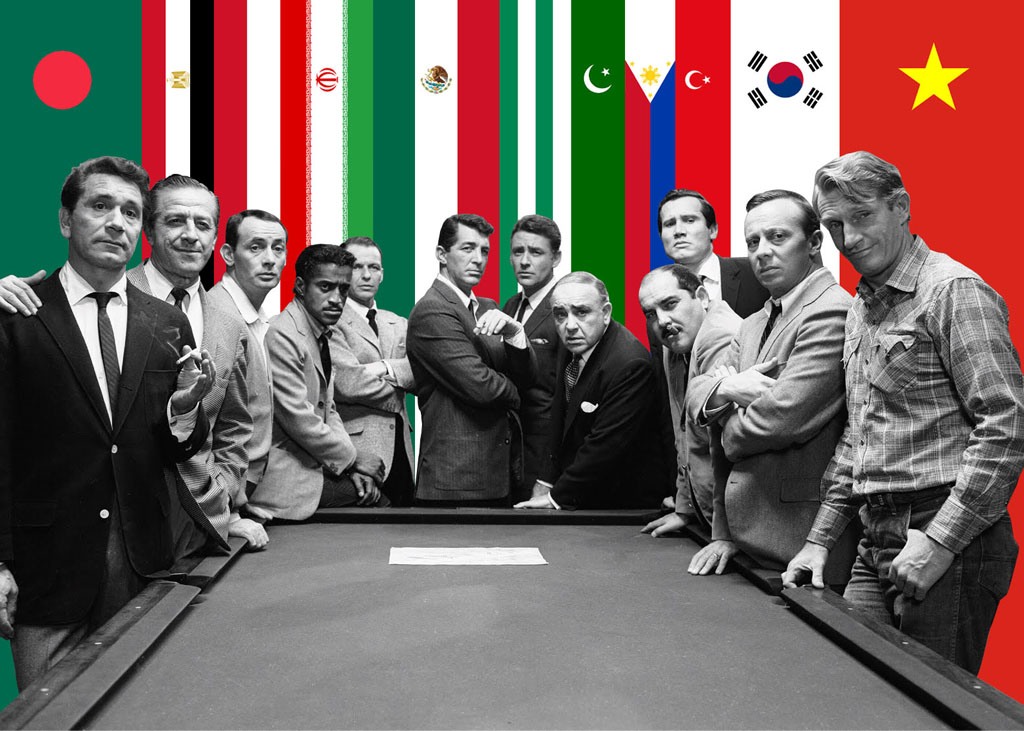27-04-12 // NEXT URBANISM

Original image: Photo still from Lewis Milestone’s 1960 “Ocean’s 11” film starring Peter Lawford, Frank Sinatra, Dean Martin,
Sammy Davis, Jr., and Joey Bishop. ©Warner Bros, image by BOARD
Next Urbanism
By Bernd Upmeyer
Over the past ten years a lot has been researched, analyzed, written and said about cities in the largest developing countries and emerging economies such as Brazil, Russia, India, and China. Let us call it “BRIC Urbanism” as BRIC is the acronym that refers to these countries. Recently, however, things have changed and while time moved on, a new generation of emerging economies is on the march that might feature an urbanism different from anything seen before. This development has triggered our curiosity and we see it as urgent and necessary to understand what is happening in the cities of these newly emerging economies.
Although our new theme – “Next Urbanism” – sounds like the title for a conference on emerging urban design practices, in this context it should be understood as “The Next Eleven Urbanisms”. What we are talking about here are the cities of the so-called “Next Eleven” or “N-11”, a term coined by the Goldman Sachs Investment Bank in 2005, denoting eleven countries – Bangladesh, Egypt, Indonesia, Iran, Mexico, Nigeria, Pakistan, Philippines, Turkey, South Korea, and Vietnam – that have been identified as becoming, along with the BRICs, part of the group of the world’s largest economies in the 21st century. The major cities of those countries all seem to have extraordinary potential for investment and future growth and their development might change and challenge our understanding of how cities work to the core.
This new issue of MONU will explore how cities of the “Next Eleven” countries are already different and will be different in the future, from the cities of the “BRICs”, but also from the ones of the “MEDCs“– the more economically developed countries – in terms of their politics, their economies, their geographies, their cultures, their social aspects, their technology, their ecology and in the relation to their physical structures, such as their architecture. Will the dynamics of their accelerating growth, for example, be similar to that of cities in other emerging economies? What characterizes and will characterize the “Next Urbanism” in general and where resides the biggest potential of the cities of the “Next Urbanism”? With what kind of cities are we actually dealing here? How will they develop? What is their future? Who will, for example, be involved in the planning and development of this “Next Urbanism” and what will the cities and the public spaces of the “Next Urbanism” ultimately look like?
Title: Next Urbanism
Author: Bernd Upmeyer
Date: April 2012
Type: Call For Submissions for MONU
Publications: MONU – Magazine on Urbanism
Location: Rotterdam, The Netherlands